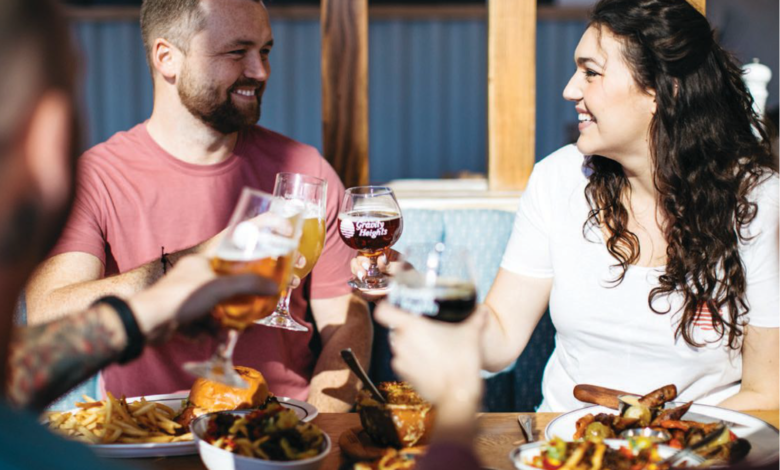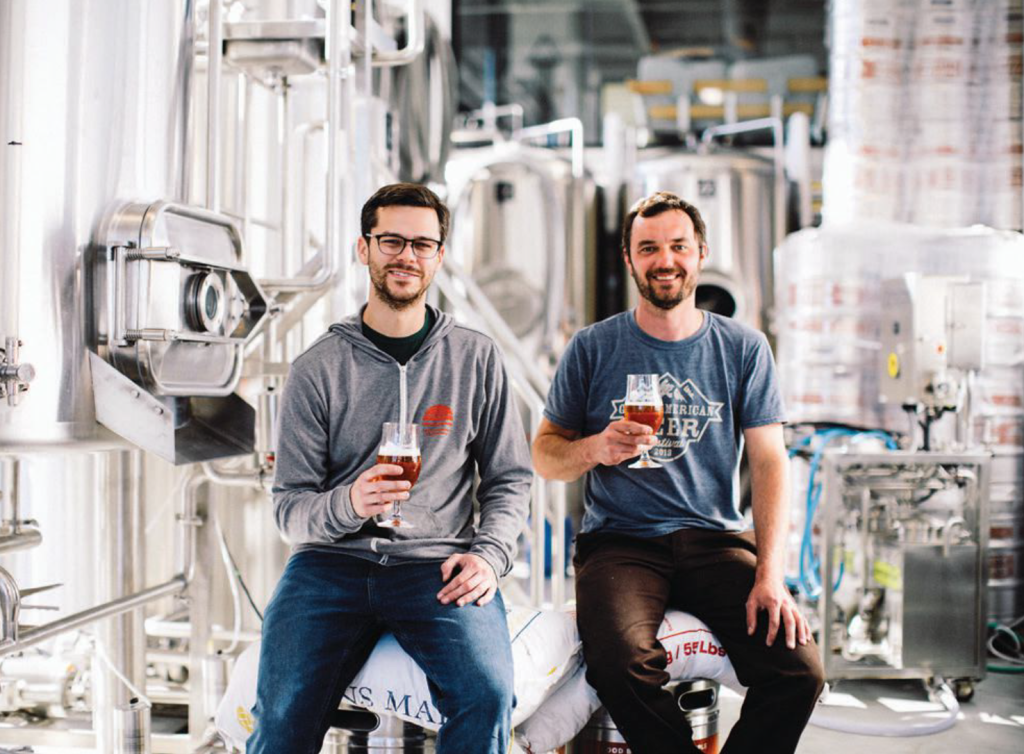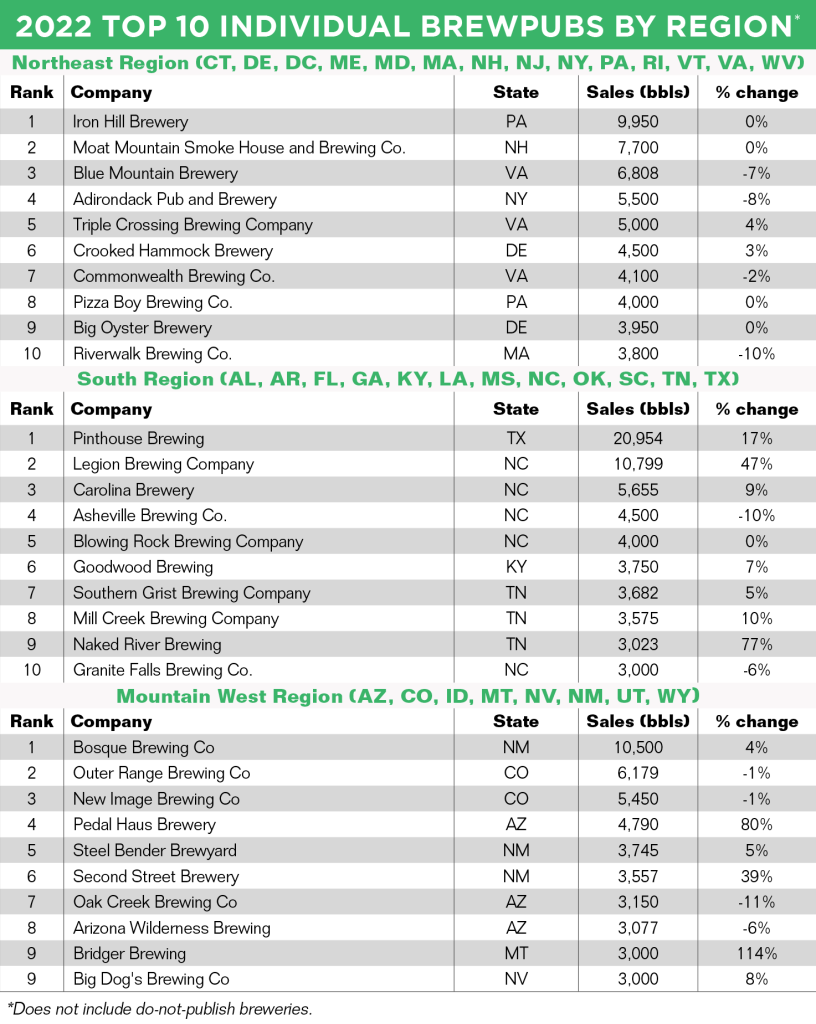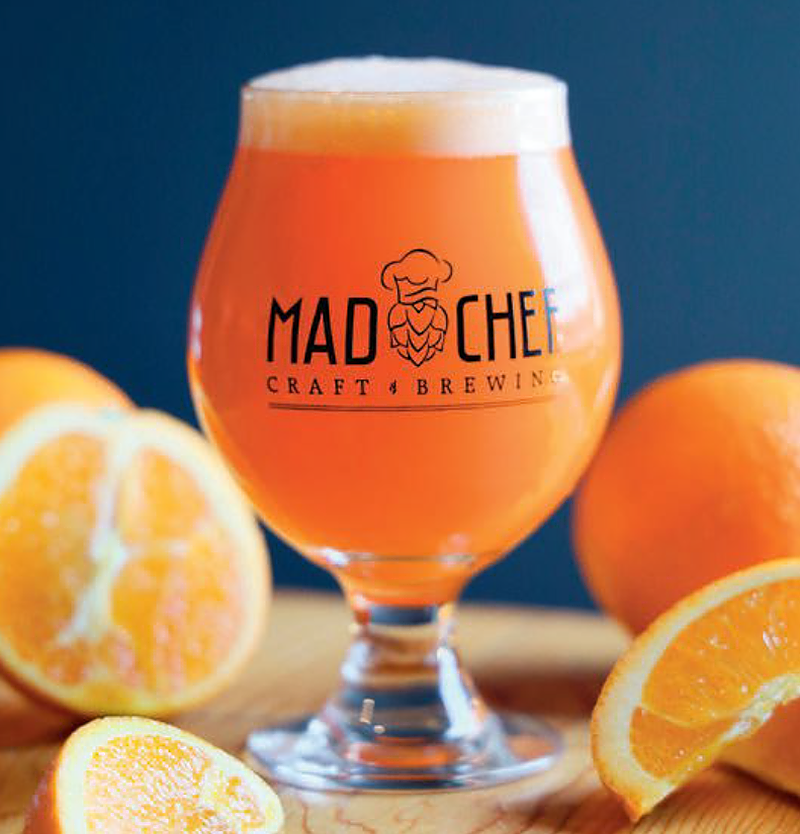
Three years removed from the onset of COVID-19, the hospitality industry is still dealing with the momentous impact of the pandemic. After countless pivots by restaurateurs and their short-handed workforces, customers are slowly but surely returning, but they are doing so on a new set of terms requiring even more adjustments.
But challenges are nothing new in this industry, especially for brewpubs, which are scrappy by nature and have proven incredibly formidable of late. The segment grew 5 percent by volume in 2022.
Restaurant owners realize that the dining landscape may have changed, but in the end, it comes down to hospitality industry fundamentals. Today’s brewpubs must provide a well-rounded experience in a comfortable environment with adept service and quality wares. And if a business can do all of those things while also setting itself apart, then even on the backend of a pandemic—with inflation, supply-chain issues, and unprecedentedly high operating expenses—the sky is still the limit.
IT’S ALL ABOUT THE EXPERIENCE
In 2018, with nearly two decades of hospitality experience, San Diego, Calif. restaurateur Arturo Kassel took a step outside his comfort zone, constructing a state-of-the-art, two-story brewpub called Gravity Heights. Though he already had eight successful restaurant concepts to his name, including one with Bib Gourmand status bestowed by the esteemed Michelin Guide, this was his first foray into beer. He was a stranger in a strange land, but fortunately he had an experienced sherpa: AleSmith Brewing founder Skip Virgilio.
The pair met through Kassel’s beer-loving business partner, who brought them together over homebrews in his garage. Virgilio had been out of the beer world since selling his business in 2002, but never lost his zeal for brewing. In the years since, he had come close to rejoining the industry, but it was the promise presented by Kassel’s ambitious brewpub concept that finally pulled him back in.
“I had no business getting involved in the brewery business without partners who had the experience and the passion for it,” says Kassel. Virgilio had that in spades, as did the young team of experienced brewers he brought on to handle the day-to-day production of a wide-ranging array of ales and lagers, which have been every bit as well received as the brewpub that bore them (pictured below) .
Kassel tips his hat to his brewers but acknowledges that Gravity Heights’ success is about more than quality beer. As with any hospitality venue, atmosphere, design, food, and service are of the utmost importance. Having veteran leadership in the brewhouse has allowed him to apply his expertise to those aspects of the business to help it stand out in a region awash with local beer.

When Gravity Heights debuted in 2019, San Diego County was home to well over 200 local beer venues, including more than 40 brewpubs. Even with so many local and award-winning players, Kassel saw room for improvement.
“I felt there was no shortage of great craft beer locally; however, very few breweries or even brewpubs were putting the same love, effort, and resources into the guest experience as they were with their beer,” he says.
We’ve always thought delicious food, exceptional service, and genuine hospitality was a recipe for success. Adding great beer and great ambiance to that equation made sense.”
Arturo Kassel, Owner, Gravity Heights
Sleek and modern with multiple dining rooms, a spacious bar-equipped patio, a thoughtful menu extending well beyond standard pub grub, and house beers running the stylistic gamut, Gravity Heights earned a fast following, pulling in workers from the plethora of businesses in its Sorrento Valley neighborhood. Year one had Kassel and company excited for what was to come, but then came Covid.
“Covid changed everything about everything. What was at one point a trade area with tens of thousands of people coming to work every day changed indefinitely with people working from home or having more flexible schedules,” says Kassel. “The biggest challenge for us has been the shift in how people work and how people live. We never took our guests for granted, but the supply-and-demand equation was very favorable to us pre-pandemic, due to the sheer volume of people.”
Since the onset of the pandemic, Kassel and his crew have worked hard to reach residents of the bedroom communities surrounding Gravity Heights. That helped them recapture some of the lost weekday revenues on weekends. They also remodeled their bar, introducing liquor and cocktails to the beverage program, and began packaging beer for distribution so it could be discovered beyond the brewpub.
While business isn’t back to pre-pandemic levels and there are new challenges—inflation, increased cost of goods, supplies, utilities, and labor—Kassel says his business is on the road to recovery, and he has enough belief in the concept that he’s in the process of duplicating it. Come the end of this year, he hopes to open the doors to a second Gravity Heights location in the central San Diego community of Mission Valley. If that high-profile location works out, it could give way to one or two additional sister venues.
“Gravity Heights is not just a product; it’s a place and it’s an experience, one we’re confident can be a value-add for multiple communities within the greater San Diego region,” says Kassel. “We have a lot riding on the second location. If we don’t get it right, there is no third or fourth location. The bottom line is that we need to deliver a great guest experience. When we do that, the business grows. When we don’t, it doesn’t.”

FOREVER CHANGED
Faith in the uniqueness of his brewpub concept also led Seth Gross (pictured below) to open a second location. After all, his Bull City Burger and Brewery had defied the odds, finding success as an early entrant to downtown Durham, N.C. years before the area’s revitalization. Along the way, it earned a Small Business of the Year nod from Business North Carolina and champion status at the North Carolina Brewers Cup. The timing was right to grow the business…until it wasn’t.
In early 2020, as Gross was putting the finishing touches on a spinoff five miles west of his original location, COVID-19 brought the country and commerce to a halt. Like countless others in the hospitality industry, he did his best to pivot, then pivot again, hoping things would return to some sense of normalcy. Of course, they did not, and by June, he had no choice but to unceremoniously open his new venue or let it go. He chose the former and, while he prefers to not even think about Bull City Solera and Taproom’s first two years, he says business finally took off at the start of 2023.
“February 2023 was the first time that local restaurants began to feel busy again. They’re not at pre-pandemic levels, and we are still down 15 to 20 percent on any given week, but it gives me hope that things are changing,” says Gross. However, that optimism is tempered with concerns regarding consumer trends. “I think the restaurant and brewpub business is forever changed. People want fast and convenient more than ever, and they are willing to sacrifice quality for that.”
Gross notes that while major restaurant chains have the resources and infrastructure to adapt better to the hospitality industry’s new normal, it’s more challenging for small businesses with less financial wherewithal, especially following three years of decreased revenue. Even something as seemingly simple as working with third-party delivery services is infeasible due to fees that cut into or eliminate profit margins. And while independent operations may be able to institute modern tools like online and contactless ordering technology, Gross says it’s far from ideal, especially for brewpubs.

“Now, everything has to be available to order by phone. This presents unique challenges in trying to upsell or feature great items that a customer may overlook,” he says. “I can’t think of any way to really replace the human interaction experience you get in a restaurant with online ordering. Let’s face it, a pop-up window saying, ‘how about trying this?’ doesn’t really cut it. And it’s very difficult to talk about the nuances of a beer and sell that to a guest online.”
Gross counts it as a positive that his businesses now feature robust online ordering systems but would prefer to have customers in his restaurants where his staff can provide them with an experience that is positive, memorable, and unique. The latter is what his reputation is built on. His kitchens produce everything from scratch, down to base items such as buns, sauces, and even graham crackers used to make crusts for cheesecake. He brews just two core offerings while keeping Bull City’s other taps rotating through 65 ales and lagers, including some that are barrel-matured using the Spanish solera-aging method Gross picked up working at Goose Island.
He admits it would be easier to do less, to conform and streamline, but that’s not why he got into the brewpub business. Being different, going the extra mile, is what has earned him a customer base.
“It’s not just brewpubs that need to be unique, but all businesses,” says Gross. “We are here to create a unique experience that makes a guest want to return.”
A FAMILY AFFAIR
It was the summer of 2015 when a brewpub melding craft beer and culinary arts touched down in a strip mall in Lancaster, Pa. The product of Greg Kendig and Francisco Ramirez—friends who bonded over years of homebrewing exploits—goes by the name of Mad Chef Craft Brewing and has been a runaway success behind split-batching, which allows guests to taste base beers beside versions that have been infused with flavor-enhancing ingredients or otherwise tweaked to achieve avant-garde flavor profiles. Mad Chef brewed 783 barrels in 2022.
Even with such an innovative business model, Kendig and Ramirez understand the importance of pushing and continually evolving. Some of that evolution has come unexpectedly, as a result of pandemic pivoting.
“The primary thing that changed for us during the pandemic had to do with how we seat our customers. We were in an open-seating process prior to Covid; no host, just come in and find a table. That made it difficult for our customers when we were really busy,” says Kendig. “Covid requirements forced us to set up a host station and seat customers to ensure social distancing and that was very well received. We are now able to manage the flow and our customers don’t have to hawk tables to find a seat.”

Kendig and Ramirez also work hard to stay ahead of trends and brew a wide variety of beers so there is something for almost everyone. Even more importantly for them, they strive to be on the cutting edge with employee compensation and benefits.
“From day one, we have expressed that we do not hire employees, but rather add members to our family. We value and seek out their input and make business decisions with a family-first mentality,” says Ramirez. “The experience our customers receive is a direct reflection of how we treat them. They are great stewards of our business and strive to deliver a relaxed experience paired with great food and great beer.”
Even offering competitive wages and next-level benefits, including paid days off for full-time staff on major holidays, Ramirez says the job market is still exceedingly tough, and that staffing is the biggest challenge for Mad Chef at present. Fortunately, the company’s pro-employee culture has resulted in a sizable roster of long-tenured employees who have been able to handle what has been a very busy brewpub since the holidays.

SAFE SPACE FOUND… AND LOST
In 2015, when Regan Long and Sarah Fenson opened Local Brewing at the base of a historical building in San Francisco’s South of Market neighborhood, they received a good amount of press. It was no surprise, as they had a compelling story. After 20 years of homebrewing and five years of contract brewing their commercial beers at another local brewery, they’d worked hard to raise funds to open their own brewpub with a cool vibe and quality beers. But what most people fixated on was Local being San Francisco’s first women-owned and -operated brewery.
“It was kind of a big deal, and it was great to get that acknowledgement, but it was definitely a double-edged sword in some ways,” says Long. “We got initial flak from some of the industry for getting press ‘just because we’re women brewers,’ to the point where we felt it was something we needed to keep on the DL. As a result, we barely put ourselves on social media and made no mention of LGBT, because we just thought it would make things worse.”
Despite winning scads of high-profile awards for their beers, Long and Fenson struggled to gain acceptance from industry contemporaries. Frustrated but undeterred, they kept their heads down, soldiered on, and made a go of their passion project.
Ironically, it was during the darkest of times for their business—the onset of the pandemic—that they would come out of hiding and into the light.
During the Covid era, I was forced to put myself on socials as the head brewer and it turned out to be one of the best moves for our brewery. We gained a more loyal following and recognition from our customers for surviving and thriving in the beer industry and carrying on during the pandemic as one of the only LGBT female-owned and -operated breweries around. Even more meaningful, I noticed that we were attracting fantastic staff that simply felt more comfortable working for us than for other breweries, because of our diverse and inclusive culture.”
Regan Long, Head Brewer, Local Brewing
The ethos and atmosphere so enjoyed by Local’s staff (100 percent of which was retained over the course of the pandemic, despite San Francisco being the first U.S. city to shelter in place) proved equally appealing to customers. When stay-at-home orders were lifted, people from all walks of life flocked to the brewpub to partake in its Pilsners, IPAs, sours, and stouts. That surge in patronage lasted until unexpected disaster struck last December.
“We received a late-night call from our alarm company notifying us that there was a problem at the brewery. I drove down and found that the business above ours was in flames, and the roof had partially collapsed due to the intensity of the fire,” says Long. “Thankfully, no one was in the building and the fire had nothing to do with our unit, but there was significant water and smoke damage to the brewery, enough that we are no longer able to operate there.”
After going through so much early on, then finding a familial sense of belonging in a safe space of her own creation, only to have it destroyed by forces beyond her control, one couldn’t blame Long for being angry or defeated. But she’s not. She is cautiously weighing her options, reevaluating the craft beer market in San Francisco and the Bay Area to determine where, if anywhere, she and Fenson should relocate. She says it’s essential for any new site they secure to have the bones to recreate the innovation, modern vibe, and culture Local was known for, which would be difficult.
But one thing is certain. They aren’t interested in production brewing and fighting to get cans on shelves. For them, it’s brewpub or bust.
“We had some real struggles, as all breweries have, but more memorable are the amazing successes over the years,” says Long. “Regardless of whether we’re able to relocate, we know that our strong reputation for helping build and diversify the San Francisco craft beer scene will live on.”
This article originally appeared in the May/June 2023 edition of The New Brewer Magazine, a publication of industry trade organization, the Brewers Association

